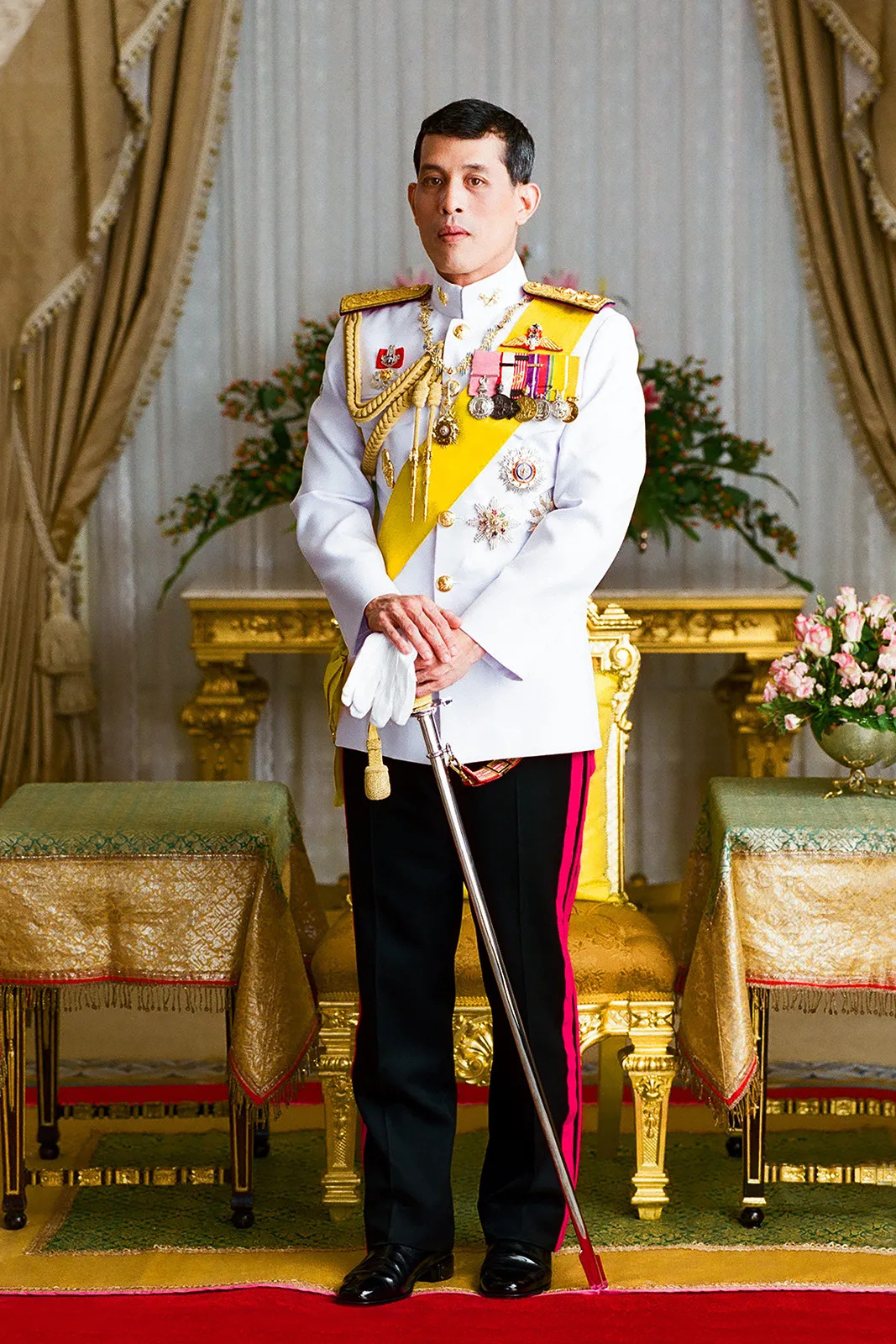Country Name: Thailand
Country Flag:

1932: From Monarchy to Constitutional Rule
Thailand, known as Siam until 1939, underwent a major transformation in 1932 when a bloodless coup led by a group of military and civilian elites forced King Prajadhipok (Rama VII) to accept a constitutional monarchy, ending centuries of absolute monarchy. This marked the birth of modern Thai politics.
1939–1945: Wartime Alliances and Changing Names
In 1939, the country changed its name from Siam to Thailand, meaning “Land of the Free.” During World War II, Thailand initially remained neutral but later allied with Imperial Japan, allowing Japanese forces to move through the country. This alliance remains controversial, though Thailand also maintained backchannel contacts with the Allies.
1950s–1970s: Military Dominance and U.S. Influence
Throughout the Cold War, Thailand aligned itself with the United States, becoming a key regional ally in the fight against communism. The Thai military held tight control over the government, often with U.S. backing. Thailand hosted American troops during the Vietnam War and received significant military and economic aid. This era was marked by rapid urban development and infrastructure growth—but also by political repression and student dissent.
1973–1976: Democratic Awakening and Tragedy
A mass student movement in 1973 forced the military to relinquish power temporarily, ushering in a brief democratic period. However, this progress was violently reversed in 1976 when security forces and right-wing paramilitaries launched a brutal crackdown on protesters at Thammasat University, killing dozens. Military rule returned shortly thereafter.
1980s–1990s: Economic Boom and Political Shifts
The late 1980s and early 1990s saw rapid economic growth, transforming Thailand into one of Asia’s “tiger economies.” The 1997 Asian Financial Crisis, however, triggered a collapse of the Thai baht and exposed deep financial vulnerabilities. Politically, this period was marked by a growing civil society and moves toward a more democratic system. The 1997 “People’s Constitution” was hailed as one of the most progressive in Thai history.
2001–2006: Thaksin Era and Populist Politics
Business tycoon Thaksin Shinawatra became Prime Minister in 2001, introducing bold populist policies such as universal healthcare and rural development schemes. While widely popular among the rural poor, Thaksin was also accused of corruption, authoritarianism, and human rights abuses. He was ousted in a military coup in 2006.
2006–2014: Political Polarisation and Repeated Coups
The following years saw deep political divisions between the “Red Shirts” (pro-Thaksin, mostly rural and working class) and “Yellow Shirts” (royalist, urban middle class and elites). Violent street protests and political deadlock led to another coup in 2014, led by General Prayut Chan-o-cha, who became Prime Minister and ruled under military-backed constitutions.
2020–2023: Youth-Led Protests and Push for Reform
In recent years, a youth-led pro-democracy movement has emerged, demanding monarchy reform, constitutional changes, and democratic freedoms. The protests have been met with arrests, censorship, and charges under Thailand’s strict lese majeste laws.
2023–Present: Electoral Twist and Conservative Hold
In the 2023 general election, the progressive Move Forward Party won the popular vote on a platform of reform, but was blocked from forming a government due to the military-appointed Senate. Instead, Srettha Thavisin of the Pheu Thai Party (aligned with the Shinawatra legacy) became Prime Minister as part of a surprising coalition with military-backed parties—highlighting the ongoing influence of the establishment.
Today’s Thailand
Modern Thailand is a constitutional monarchy with a vibrant economy and complex political landscape. It balances tradition and modernity, with strong institutions like the monarchy and military playing enduring roles. Politically, the country continues to grapple with demands for democratic reform, regional inequalities, and social tensions between generations.
Thailand is also a cultural powerhouse in Southeast Asia, renowned for its tourism, cuisine, and soft power, while playing an increasingly strategic role in regional geopolitics.
Indochina Time (ICT) (UTC+7)
Thailand has an area of 513,120 km² (198,120 sq mi)
Position in the world: 50th
Arable Land: 32%, permanent crops 8% and other (forests, urban) 60%
South Africa is 2.38 larger than Thailand.
Thailand’s climate is characterised by its tropical nature, featuring three distinct seasons with variations influenced by altitude and location. Central Thailand, exemplified by Bangkok, experiences a scorching hot season from March to June, where temperatures frequently surpass 35°C. This is followed by a rainy season from July to October, driven by monsoon patterns that bring heavy rainfall. The cool season, spanning November to February, offers a welcome respite with dry and pleasant temperatures typically ranging from 25–28°C.
In Northern Thailand, such as Chiang Mai, the cool season is more pronounced, with winter mornings occasionally dipping below 15°C. The rainy and hot seasons, however, mirror those of the central regions. Southern Thailand, including popular destinations like Phuket and Hat Yai, maintains a tropical monsoon climate throughout the year. The region’s geography further divides its coastal climate, with the west coast facing the Andaman Sea experiencing heavy rainfall from May to October, while the east coast along the Gulf of Thailand sees its rainier period from November to January.
Natural gas, tin, tungsten, gypsum, lignite, and timber.
Floods: Most frequent and damaging natural disaster. Bangkok and the central plains are vulnerable due to low-lying geography. Heavy monsoons can cause river overflow.
Drought: Northeastern and northern Thailand periodically suffer from drought, affecting agriculture and water supplies.
Storms and Typhoons: Southern coastal areas may be hit by tropical storms, especially during the rainy season.
Earthquakes: Generally low seismic activity, but northern Thailand (near the Myanmar border) has some risk due to tectonic fault lines.
Landslides: Common in mountainous regions during heavy rainfall.
Myanmar, Laos, Cambodia, Malaysia
Thailand, under UNCLOS, maintains the following:Territorial Waters: 12 nautical miles from the baseline, Contiguous Zone: 24 nautical miles and Exclusive Economic Zone (EEZ): 200 nautical miles.
Thailand has overlapping EEZ claims with neighboring countries like Cambodia, Vietnam, and Malaysia, particularly in the Gulf of Thailand.
Continental Shelf: Thailand claims rights over natural resources on the continental shelf beyond the EEZ where applicable.
Thailand’s political system is highly polarized. The country has experienced multiple coups, with the military stepping in whenever it deems the political environment unstable. Although elections are held, the structure heavily favours establishment and military-backed parties.
Opposition parties—particularly those advocating for monarchy reform or constitutional changes—face legal obstacles, disqualification, and prosecution. Activists and politicians are often charged under national security or royal defamation laws, creating an environment that limits genuine political opposition.
Power Structure:
Thailand is a constitutional monarchy with a parliamentary democracy, but the military and monarchy hold substantial influence over national governance. The King is the official head of state and is revered as the spiritual leader of the nation, though the position is largely ceremonial under the constitution. However, the monarchy wields considerable soft power, and criticism of the institution is strictly prohibited under Thailand’s harsh lese-majeste laws.
The Prime Minister is the head of government and holds executive power. Since the 2014 coup, Thailand’s political system has been shaped by a military-backed constitution, giving unelected bodies—particularly the Senate—significant control over key decisions, including the selection of the Prime Minister.
Parliamentary Structure:
Thailand has a bicameral National Assembly:
ASEAN Leadership:
Indo-Pacific Balance:
Traditional Allies and Regional Partners:
Middle Power Positioning and Global Influence:
Security Concerns and Border Issues:
Soft Power and Global Image:
Government Type
Constitutional Monarchy
Monarch
King Maha Vajiralongkorn (Rama X).

Current Prime Minister: Paetongtarn Shinawatra

Term Begin-current
Monarch Term: October 2016
Prime Minister: August 2024
Ideology: Social democratic, Progressive, reformist, Centre-left
Ideology: Liberal conservatism, Economic Liberalism, Populist, Centre-right
Ideology: Conservative, pro-military, pro-monarchist, Far-right
General elections occur every four years. The most recent elections were held in May 2023.
Expected in 2027.
Thailand is an ASEAN (Association of Southeast Asian Nations) founding member, promoting regional integration and non-interference. The country follows a neutral diplomacy approach, often balancing relations between major global powers, maintaining strong ties with both China and the West.
Size in world: 25th
GDP: 514.97 USD billion
GDP Per Capita: 7 182
Currency: Thai Baht (THB)
Dominant Economic Sector: Services
Market Type: Mixed Economy
Social Landscape
Population: 65.9 million (2024).
Position: Class Distribution
Upper Class: 5-10%
Middle Class: 40-50%
Lower Class/Poverty: 30-40%
Gini Coefficient
34.9 (2021).
Language
Official Language: Thai
Other languages: Various regional dialects and minority languages
Religion
Dominant Religion: Buddhism
Other religions: Islam, Christianity, Hinduism